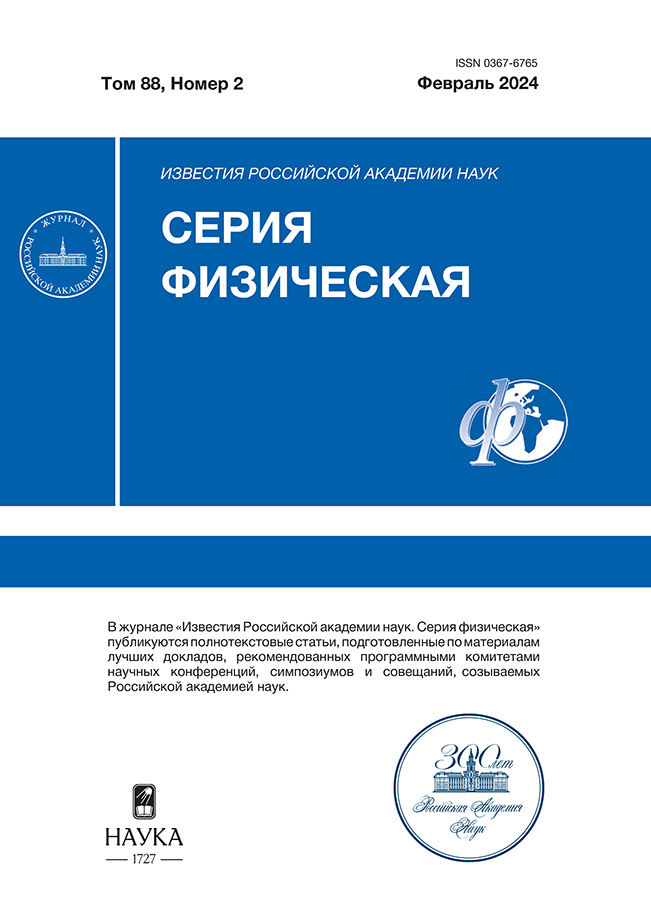Studying the optical properties of assembled silver and gold nanoparticles for the purpose of creating SERS sensors
- Autores: Subekin A.Y.1, Pylaev T.E.2,3, Kukushkin V.I.4, Rudakova E.V.5, Khlebtsov B.N.2
-
Afiliações:
- Moscow Institute of Physics and Technology
- Saratov Scientific Center of the Russian Academy of Sciences
- Razumovsky Saratov State Medical University of the Ministry of Health of the Russian Federation
- Osipyan Institute of Solid-State Physics of the Russian Academy of Sciences
- Federal Research Center for Problems of Chemical Physics and Medicinal Chemistry of the Russian Academy of Sciences
- Edição: Volume 88, Nº 2 (2024)
- Páginas: 211-218
- Seção: New Materials and Technologies for Security Systems
- URL: https://cijournal.ru/0367-6765/article/view/654752
- DOI: https://doi.org/10.31857/S0367676524020086
- EDN: https://elibrary.ru/RTEMQM
- ID: 654752
Citar
Texto integral
Resumo
The optical properties of silver and gold sols with different sizes of nanoparticles and the method of their chemical deposition on the surface of silicon, silicon oxide, glass and aluminum foil were studied in order to obtain SERS substrates – promising platforms for the development of aptamer sensors and immunochemical analysis of various pathogens. It has been established that for operation on lasers with exciting radiation wavelengths of 532, 638 and 785 nm, it is possible to create universal SERS substrates based on colloidal solutions obtained by the liquid-phase chemical method with an average silver particle size of 40 nm and by the Leopold-Lendl method with an average size of 20 nm.
Texto integral
Sobre autores
A. Subekin
Moscow Institute of Physics and Technology
Email: kukushvi@mail.ru
Rússia, Dolgoprudny
T. Pylaev
Saratov Scientific Center of the Russian Academy of Sciences; Razumovsky Saratov State Medical University of the Ministry of Health of the Russian Federation
Email: kukushvi@mail.ru
Rússia, Saratov; Saratov
V. Kukushkin
Osipyan Institute of Solid-State Physics of the Russian Academy of Sciences
Autor responsável pela correspondência
Email: kukushvi@mail.ru
Rússia, Chernogolovka
E. Rudakova
Federal Research Center for Problems of Chemical Physics and Medicinal Chemistry of the Russian Academy of Sciences
Email: kukushvi@mail.ru
Rússia, Chernogolovka
B. Khlebtsov
Saratov Scientific Center of the Russian Academy of Sciences
Email: kukushvi@mail.ru
Rússia, Saratov
Bibliografia
- Федеральный закон № 492 от 30 декабря 2020 г.
- https://emergency.cdc.gov/agent/agentlist-category.asp.
- https://www.who.int/health-topics/biological-weapons.
- Конвенция о запрещении биологического и токсинного оружия от 10 апреля 1972 г.
- https://стопкоронавирус.рф.
- Darwish I.A. // Int. J. Biomed. Sci. 2006. V. 2. P. 217.
- Bojorge R.N., Salgado A.M., Valdman B. // Braz. J. Chem. Eng. 2009. V. 26. No. 2. P. 227.
- Zhou L., Zhou J., Feng Z. et al. // Analyst. 2016. V. 141. P. 2534.
- Lim C.Y., Granger J.H., Porter M.D. // Analyt. Chim. Acta X. 2019. V. 1. Art. No. 100002.
- Kamorachaia K., Sakamoto K., Laochareonsukc R. // RSC Advances. 2016. V. 6. P. 97791.
- Byzova N.A., Zvereva E.A., Zherdev A.V. et al. // Analyt. Chim. Acta. 2011. V. 701. No. 2. P. 209.
- Dzantiev B.B., Urusov A.E., Zherdev A.V. // Biotechnol. Acta. 2013. V. 6. No. 4. P. 94.
- Leopold N., Lendl B. // J. Phys. Chem. B. 2003. V. 107. P. 5723.
- Крутяков Ю.А., Кудринский А.А., Оленин А.Ю., Лисичкин Г.В. // Усп. химии. 2008. Т. 77. № 3. С. 242.
- Lee P.C., Meisel D. // J. Phys. Chem. 1982. V. 86. P. 3391.
- Лисичкин Г.В. Модифицированные кремнеземы в сорбции, катализе и хроматографии. М.: Химия, 1986. 247 с.
- Чукин Г.Д. Строение оксида алюминия и катализаторов гидрообессеривания. Механизмы реакций. М.: Тип. «Паладин»: Принта, 2010. 288 с.
- Копицын Д.С., Котелев М.С., Зиангирова М.Ю. и др. // Башкир. хим. журн. 2014. Т. 21. № 4. С. 104.
- Zheng Y., Zhong X., Li Zh., Xia Y. // Part. Part. Syst. Charact. 2014. V. 31. P. 266.
- Khlebtsov B.N., Tumskiy R.S., Burov A.M. et al. // ACS Appl. Nano Mater. 2019. V. 2. No. 8. P. 5020.
- Zavyalova E., Ambartsumyan O., Zhdanov G. et al. // Nanomaterials. 2021. V. 11. No. 6. P. 1394.
- Кукушкин В.И., Астраханцева А.С., Морозова Е.Н. // Изв. РАН. Сер. физ. 2021. T. 85. № 2. С. 182; Kukushlin V.I., Astrakhantseva A.S., Morozova E.N. // Bull. Russ. Acad. Sci. Phys. 2021. V. 85. No. 2. P. 133.
- Canpean V., Astilean S. // Spectrochim. Acta Part A. 2012. V. 96. P. 862.
Arquivos suplementares














